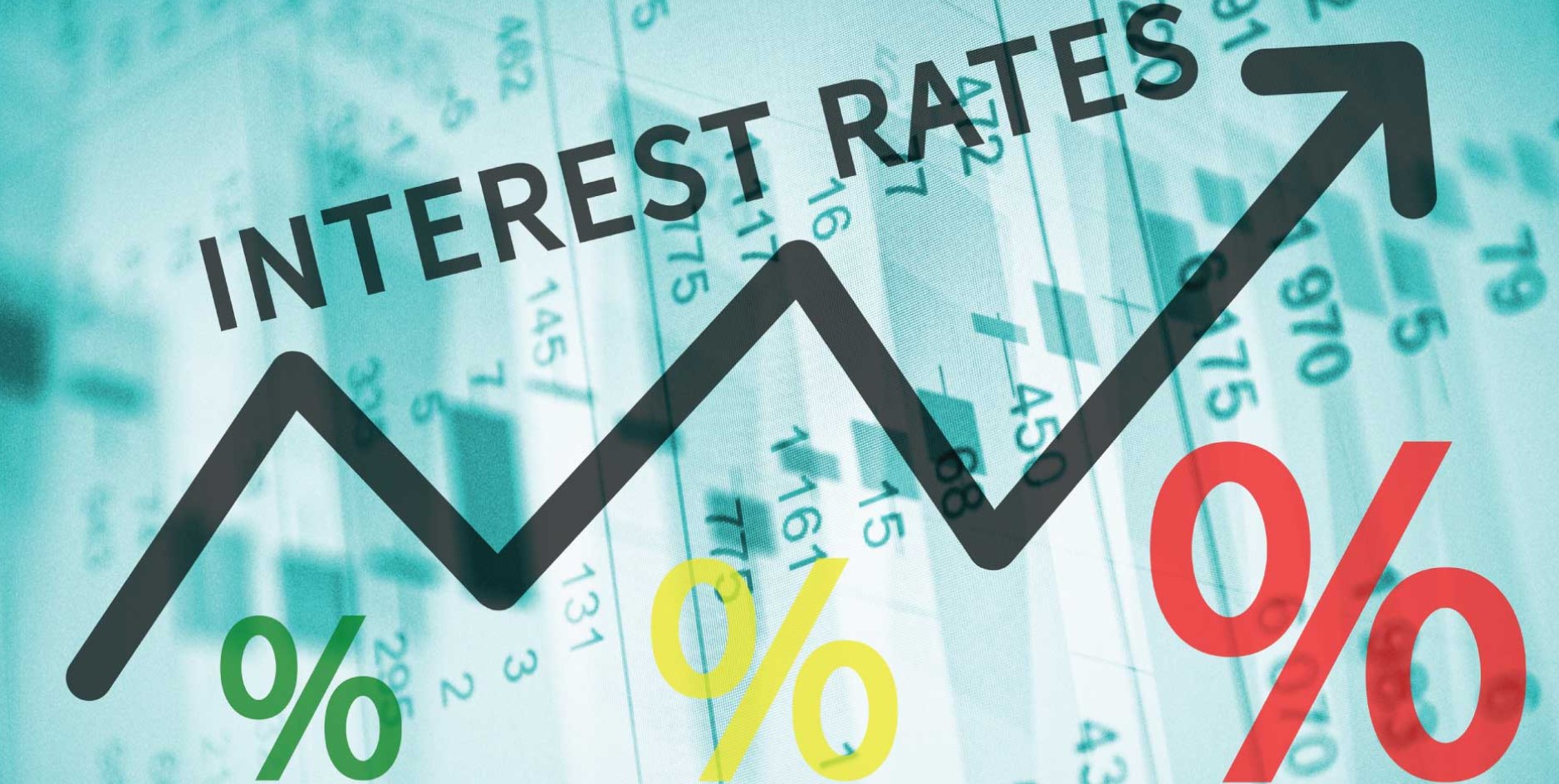In the world of finance, few things have as much impact on global markets as interest rates. These seemingly innocuous numbers can send shockwaves through the foreign exchange (Forex) market, affecting everything from currency values to international trade. In this article, we’ll delve deep into the intricate relationship between interest rates and Forex, exploring how changes in rates can influence currency exchange rates, investment strategies, and economic stability.
Understanding the Basics
What Are Interest Rates?
Interest rates, often referred to as the “price of money,” are fundamental to the functioning of modern economies. These rates represent the cost of borrowing money or the return on investment for lending it. Central banks, such as the Federal Reserve in the United States or the European Central Bank in Europe, are responsible for setting these rates. They do so with the primary goal of influencing economic conditions. When a central bank raises interest rates, it aims to cool down an overheating economy by making borrowing more expensive. Conversely, when rates are lowered, it’s usually to stimulate economic activity by making borrowing more affordable.
The Forex Market
The foreign exchange, or Forex, market is the global epicenter of currency trading. It’s where currencies from around the world are bought and sold, 24 hours a day, five days a week. This market dwarfs all others in terms of trading volume, with a daily turnover exceeding $6 trillion. It’s essential to understand that in Forex, currencies are always traded in pairs. For example, if you’re trading the EUR/USD pair, you’re essentially exchanging euros for U.S. dollars. The value of one currency is expressed in terms of another, and this exchange rate fluctuates constantly based on supply and demand dynamics.
The Interest Rate Effect on Forex
Direct Impact
Interest rates have a direct and immediate impact on the Forex market. When a central bank alters its interest rates, it sends powerful signals to investors and traders. A rate hike often signals confidence in the economy and an attempt to curb inflation. In response, traders may flock to that currency, driving up its value. Conversely, a rate cut might indicate economic concerns and a desire to stimulate economic growth. In such cases, traders might sell that currency, causing its value to drop. These reactions can occur within minutes or even seconds of a rate announcement, making central bank decisions critical events for Forex traders.
High Interest Rates
Countries with high-interest rates tend to attract foreign capital seeking higher returns. Imagine a country where the central bank offers interest rates significantly higher than those in other nations. Investors from around the world will seek to invest their money in that country’s assets, whether it’s government bonds or stocks. To do so, they need to exchange their home currency for the local currency, increasing demand for the latter. This heightened demand can drive up the value of the local currency in the Forex market.
Low Interest Rates
Conversely, countries with low-interest rates may experience capital outflows as investors look for better returns elsewhere. If a nation’s central bank reduces interest rates to stimulate economic growth or combat deflation, investors may seek higher yields in other countries. To do this, they’ll exchange the local currency for stronger currencies with higher rates. This can lead to a depreciation of the local currency’s value in the Forex market as supply outpaces demand.
These dynamics illustrate how interest rates are not just numbers on a central bank’s balance sheet; they are powerful drivers of currency movements in the Forex market. In the next sections, we will explore in more detail how traders and investors navigate these fluctuations and utilize strategies like the carry trade to capitalize on interest rate differentials.
Carry Trade Strategy
The Carry Trade Concept
The carry trade strategy is a popular approach among Forex traders, taking advantage of interest rate differentials between currencies. Here are key elements of the carry trade:
|
Currency Pair |
Interest Rate Differential |
Leverage Used |
Rollover Rate (Daily Interest) |
|
EUR/JPY |
2.5% |
10:1 |
+$25 (earning) |
|
AUD/USD |
1.75% |
20:1 |
+$8.75 (earning) |
|
GBP/CHF |
1.25% |
30:1 |
+$3.75 (earning) |
|
USD/CAD |
0.5% |
50:1 |
+$0.5 (earning) |
Risks and Rewards
The carry trade can be lucrative, but it’s not without its risks. Here’s a breakdown of the risks and rewards:
Rewards:
- Interest Income: Traders can earn a steady income from the interest rate differential as long as the trade remains in their favor.
- Diversification: It allows traders to diversify their portfolio by including currency-related assets, potentially reducing overall risk.
- Hedging: Some traders use carry trades as a form of hedging, protecting against adverse currency movements in other parts of their portfolio.
Risks:
- Exchange Rate Volatility: Currency values can be highly volatile. An unfavorable exchange rate movement can quickly erase any interest income and result in losses.
- Leverage Risk: Leveraging a carry trade amplifies both gains and losses, making it possible to lose more than the initial investment.
- Interest Rate Changes: Central banks can change interest rates unexpectedly, impacting the carry trade’s profitability.
In this table, we’ve provided examples of currency pairs used in carry trades, the interest rate differentials between them, the leverage applied, and the daily rollover rates indicating whether traders earn interest (positive) or pay interest (negative) based on their positions. This table helps traders understand how different currency pairs can offer varying opportunities and risks when implementing the carry trade strategy.
Economic Indicators
Leading Economic Indicators
Forex traders closely monitor various economic indicators to gauge an economy’s health and potential interest rate movements. Here are some key leading indicators:
- Gross Domestic Product (GDP): A nation’s GDP reflects its overall economic performance. Positive GDP growth often suggests a stronger economy, potentially leading to rising interest rates.
- Inflation Rate: High inflation can erode the purchasing power of a currency. Central banks may raise interest rates to combat inflation, making their currency more attractive to investors.
- Unemployment Rate: A high unemployment rate can indicate economic weakness. Central banks may lower interest rates to stimulate job growth and economic activity.
Impact on Forex Traders
Forex traders rely on these economic indicators to make informed trading decisions. Here’s how these indicators impact their strategies:
Using GDP Data:
- Anticipating Interest Rate Changes: A strong GDP growth figure can suggest future interest rate hikes, which traders may factor into their positions.
- Identifying Economic Trends: GDP data over time can help traders identify long-term economic trends, providing valuable insights for their strategies.
Considering Inflation:
- Informed Trading: Traders who track inflation rates can anticipate central bank actions and adjust their positions accordingly.
- Risk Management: Awareness of inflation trends helps traders manage risk by preparing for potential interest rate shifts.
Analyzing Unemployment Data:
- Economic Sentiment: A rising unemployment rate may indicate economic pessimism, affecting trader sentiment and positioning.
- Volatility Expectation: High unemployment can lead to market volatility, influencing trading strategies and risk management.
These economic indicators act as crucial tools for Forex traders, allowing them to adapt to changing market conditions and make informed decisions. In the next section, we’ll explore how currency pegs and bands can impact the relationship between interest rates and Forex.
Currency Pegs and Bands
Fixed Exchange Rates
Some countries peg their currency to another, often a major one like the US dollar or the euro. This can limit the influence of interest rate changes on Forex.
Maintaining Stability
Maintaining a pegged rate requires a commitment to managing interest rates and foreign exchange reserves.
Inflation and Interest Rates
▪ Inflation’s Influence
- High inflation can erode the real return on investments, prompting central banks to raise interest rates to combat it.
▪ Forex Implications
- Interest rate hikes aimed at curbing inflation can attract foreign investment, boosting the domestic currency.
In conclusion, the relationship between interest rates and Forex is a complex web of cause and effect. Interest rate changes can ripple through the currency markets, affecting everything from exchange rates to investment strategies. Forex traders, investors, and central banks all closely monitor interest rates, making them a key driver of global financial markets.
FAQs
Q1: How often do central banks change interest rates?
Central banks typically review interest rates regularly, and changes can occur at any time. However, major policy shifts are often announced at scheduled meetings.
Q2: Can Forex traders profit from interest rate changes?
Yes, Forex traders can profit from interest rate changes by accurately predicting their impact on currency values and implementing appropriate trading strategies.
Q3: Are high-interest rates always good for a country’s currency?
While high-interest rates can attract foreign capital, excessively high rates can also indicate economic instability, which may deter investors.
Q4: What are some common economic indicators Forex traders watch?
Forex traders monitor indicators like Gross Domestic Product (GDP), inflation rates, and unemployment figures to gauge an economy’s health and potential interest rate movements.
Q5: How can individuals stay updated on interest rate changes?
Individuals can stay updated on interest rate changes through financial news outlets, central bank announcements, and economic calendars available on many financial websites.

